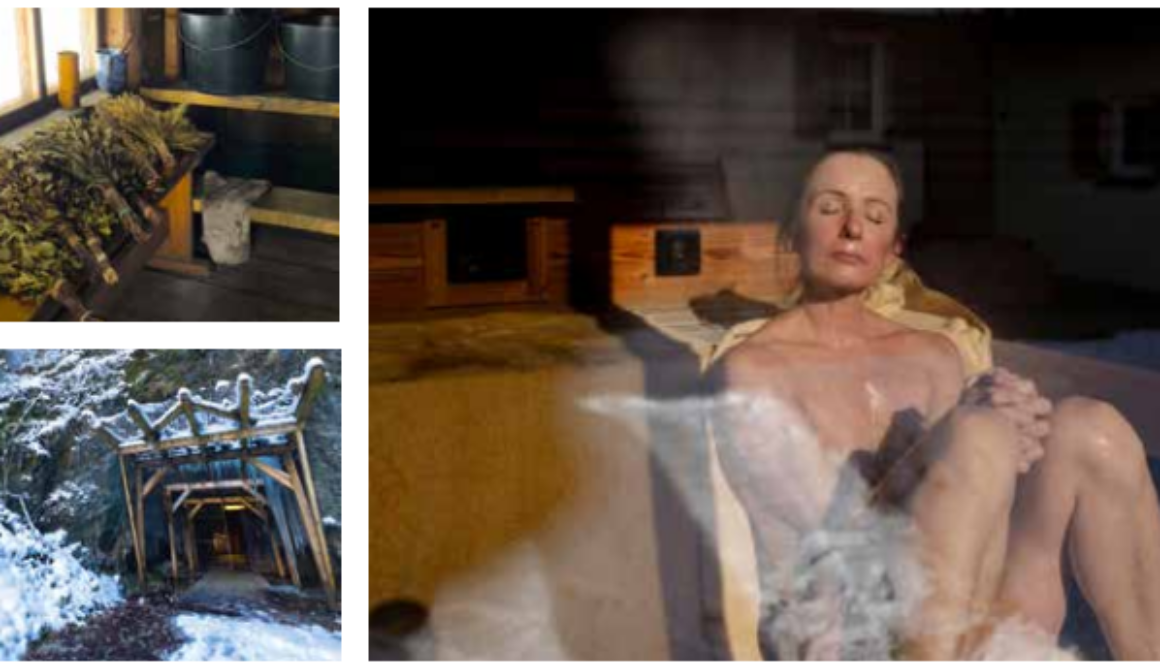Wanderlust magazine: Tartu2024 European Capital of Culture
When Hegert Leidsalu, of the Tartu City Government office, woke up on a cold and snowy Wednesday morning, he’d only expected to be doing a little driving. Sixty minutes later, I, a complete stranger, was massaging ash into his pert naked buttocks, as if basting him for the oven. Were we mortified? Most definitely. But at least we could blame our pinkening cheeks on the heat as we sweated politely inside a traditional smoke sauna in Haanja.
This tiny village falls under one of 19 municipalities in southern Estonia that join the city of Tartu in celebrating its European Capital of Culture title in 2024. Nor are they alone. This year, the accolade is also being shared with two other cities: Bad Ischl in Austria and Bodø in northern Norway.
Draw lines between these three places and you have an almost perfect triangle spanning the length and breadth of Europe. Thousands of kilometres separate them, and yet, often unknowingly, common threads and themes tie them together. For example, none of the cities have kept the title for themselves. Instead, they’ve all included the surrounding towns and villages in sharing the ripples of change that are often brought about by the interest that the celebrations typically bring. I spent three weeks visiting each one for their opening ceremony to see what lies in store for travellers, and what titles like this actually hope to achieve. If the aim of the European Commission grant is about seeing people and places in a new light, then basting Hegert’s bum had been an illuminating start.
GETTING ALL STEAMED UP
One inarguable thread connecting these three destinations is their sauna culture. In the heart of the Austrian town of Bad Ischl, I found myself in the thermal spa Eurothermen, where I was joined by Marcus, a local man aiming to alleviate his arthritis.
“The sauna ceremony is deep in our culture,” he told me as a hefty gentleman swirled a towel around our heads, wafting blasts of hot air in our faces.
“Us Brits tend to err on the shy side of nudity,” I replied, flinching with the heat.
“No, no. You need to be completely naked to get everything out,” he rebuked, and I felt that there was a deeper meaning to his words, perhaps about the layers that we all wear.
Bad Ischl, south-east of Salzburg, is part of Austria’s Salzkammergut, a lake-studded ‘salt domain’ as seductive as anything in The Sound of Music. This spans the regions of Salzburg, Upper Austria and Steiermark, and was the private property of the Habsburgs for 650 years. Back then, nobody was allowed to enter or leave without a special permit or passport, and the dynasty used the nearby 7,000-year-old salt mine (the world’s oldest) at Hallstatt as their personal piggy bank. Because salt was the only means of preserving food back then, this ‘white gold’ lined the Habsburg coffers until their demise in 1918.
The family was impossibly rich but had been plagued by misfortune. Sophie, the wife of Archduke Franz Karl Joseph, had suffered several miscarriages. So, when the desperate Archduke was told by doctors looking after the miners that inhaling the region’s salts was healing, he sent his wife to bathe in its waters. Whether it had an effect or not, she gave birth to the first of four sons, Franz Joseph, in 1830. He was nicknamed the ‘Salt Prince’, and Bad Ischl’s spa reputation was born.
Franz Joseph and his wife, Elizabeth, also later took up regular summer residence in Bad Ischl, at the Kaiservilla. Their influence attracted the great musicians, composers and artists of the day, transforming a rural town into a flamboyant beauty and noted spa escape. It’s this history that the artist Simone Barlian drew on when building Plateau Blo, a floating sauna that will rove around Lake Traunsee – Austria’s deepest – during the year-long Capital of Culture celebrations.
“Lakes link the region, so I wanted both a physical and metaphorical platform where the public could share open dialogue,” she said while standing next to the pewter coloured water. “In a sauna, everyone is naked – the same. It’s an equaliser. And whether you’re the mayor or a citizen, you can come together and discuss the future.”
The idea of sauna as a meeting place had also been drilled into me at the UNESCO-listed smoke sauna that I’d shared with
Hegert in Estonia. There, on Mooska Farm, owner Eda Veeroja had told me: “In a sauna, the conscious world of understanding ends and the in-between world begins.” Immediately afterwards, she’d opened the door of the alder-wood cabin to reveal its innards, shadowed with soot, where I would be scrubbed with salt, ash and a gloop of local honey before being patted with birch branches.
“Here, it’s possible to come into contact with our ancestors and their wisdom,” Eda whispered. “They are a liminal space between the forest and the farmhouse – a place for healing, magic and communication. The country grannies and grandpas are bearers of these Indigenous ways of life.”
Read full article from Wanderlust April/May addition here.

